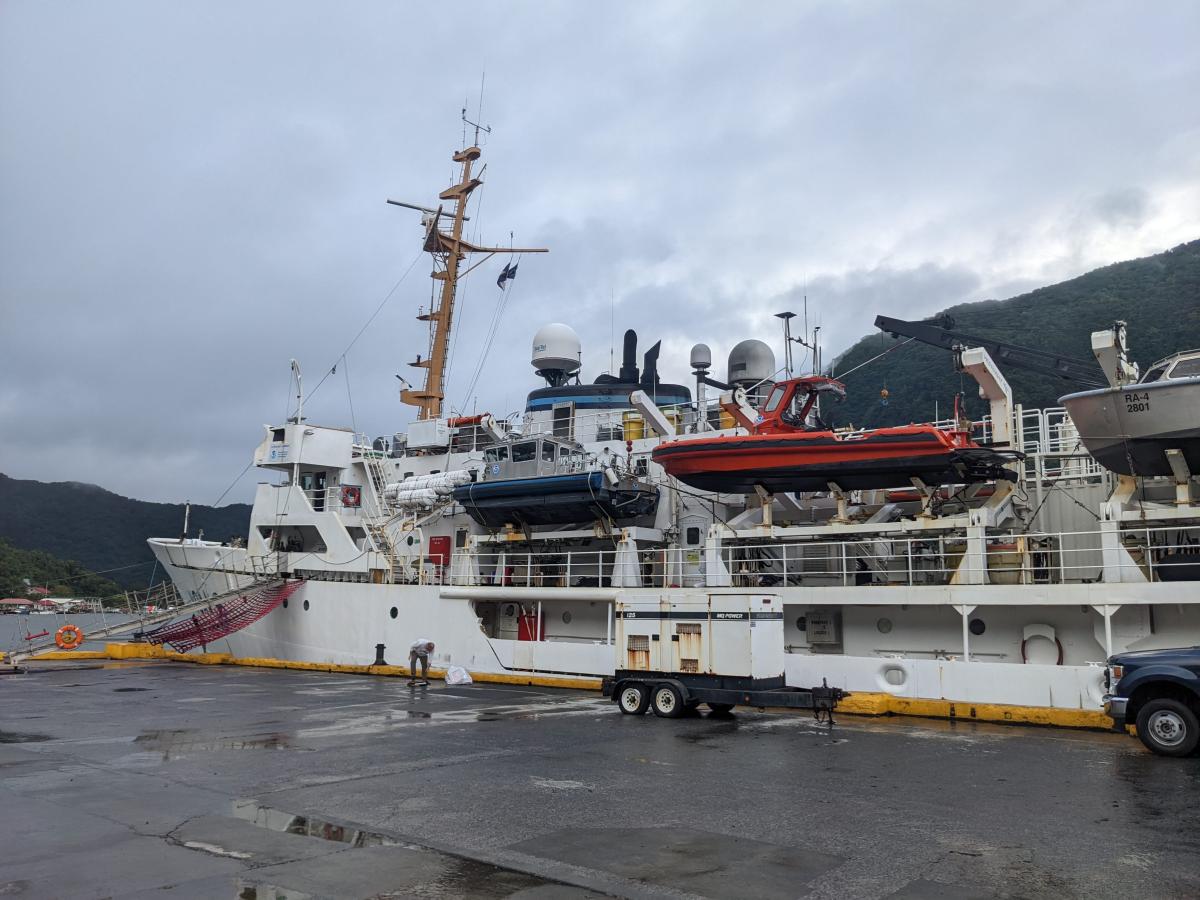
Those who spend much of their time at sea know there are many perilous situations that can happen. Bad weather, mechanical problems, and injuries are challenging and all can contribute to larger problems. However, one of the scariest situations on a vessel is a fire. Unlike a fire in your house, there’s nowhere else to go.
This is the reason that all of our ship’s crews train frequently to respond to a vessel fire. While underway, every ship does weekly drills, and when there are scientists and researchers on board, they also participate.
Unfortunately, this training was put to the test when NOAA Ship Rainier had a fire that started on Sept. 5 in the space above the engine room. At the time, they were transiting to Honolulu and located approximately 200 miles off the island of Tutuila in American Samoa. It was an isolated area of the ocean and no other ships were within radio communications.
The crew battled the fire for almost three hours. Thankfully, the crew’s extensive training helped them to contain and extinguish the fire. More importantly, there were 41 people on board and nobody was injured.
After spending approximately 18 hours working to get mechanical and communications systems back up and running, they were able to begin the journey back to the closest port, Pago Pago. While they had support from shoreside staff, it was the vessel’s crew who were responsible for safely making this successful return trip.
Once they were safely at the pier on Sept. 7, it started to become more clear that there was extensive damage to the vessel. Efforts then shifted to identifying the cause of the fire and assessing the ship’s condition.
It was determined the ship needed a repair facility with more capabilities than were available in Pago Pago and that it needed to be towed more than 2,500 miles to Honolulu where our Marine Operations Center - Pacific Islands had more resources. The ship arrived on Oct. 28.
Like all NOAA ships, Rainier is an important platform for the agency’s science missions. For the last two years, the ship has been the key vessel used for NOAA’s RICHARD mission. NOAA is working to understand not only the cause of the fire, but what impact it, and subsequent repairs, may have on future missions.
Rainier was commissioned in 1968 and is a hydrographic survey ship that maps the ocean to aid maritime commerce, improve coastal resilience, and study the marine environment. NOAA is working to recapitalize its aging fleet of research ships, including adding two ships currently under construction.

